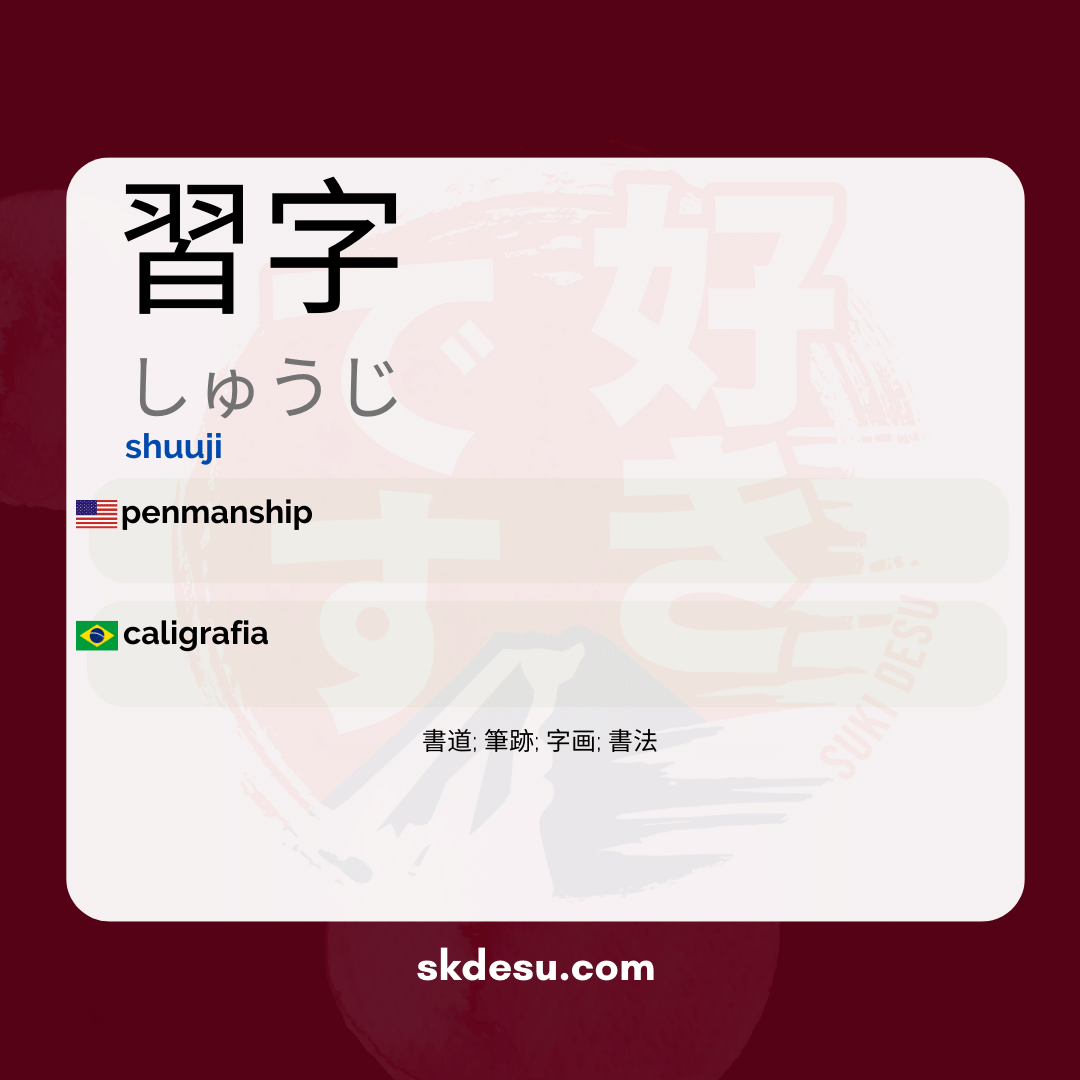Translation and Meaning of: 習字 - shuuji
The Japanese word 習字[しゅうじ] may seem simple at first glance, but it carries deep meanings linked to culture and education in Japan. In this article, we will explore its meaning, origin, and how it is used in everyday Japanese life. Furthermore, we will understand why this word is so relevant for Japanese learners and those curious about Eastern calligraphy.
If you've ever wondered what 習字 means or how it differs from other terms related to writing, this text will clarify your doubts. Here at Suki Nihongo, we aim to provide accurate and useful information for those who wish to learn Japanese authentically.
The meaning and origin of 習字
The word 習字 is made up of two kanji: 習 (shū), which means "to practice" or "to learn," and 字 (ji), which refers to "characters" or "writing." Together, they form the term that can be translated as "calligraphy practice" or "study of writing." Unlike 書道 (shodō), which is the art of calligraphy itself, 習字 has a more educational focus, aimed at basic learning.
Historically, 書道 was an essential subject in Japanese schools, teaching children to write kanji correctly and elegantly. Even today, many schools still maintain this tradition, reinforcing the importance of calligraphy in Japanese culture. The practice not only improves writing skills but also develops patience and discipline.
How 書道 is used in Japan today
In everyday Japanese life, 習字 is still a common term, especially in educational contexts. Many parents enroll their children in extra 習字 classes to improve their calligraphy, as beautiful handwriting is highly valued in the country. Furthermore, some companies even encourage employees to practice 習字 to enhance concentration.
It's worth noting that, although the word is less common in casual conversations, it appears regularly in educational materials, textbooks, and course advertisements. If you visit Japan, you can find schools specialized in 習字, many of which maintain traditional teaching methods.
Tips for memorizing and using 習字 correctly
An effective way to memorize 習字 is to associate its kanjis with concrete ideas. The character 習 refers to repetition and learning, while 字 directly reminds you of writing. A useful tip is to create flashcards with example sentences like 「習字の授業がある」(There is a calligraphy class), helping to reinforce the term in real contexts.
Another curiosity is that, although 習字 is often taught with brush and ink, many Japanese people today practice with special pens for calligraphy paper. This shows how tradition adapts to modern times without losing its essence. If you are learning Japanese, trying out 習字 can be a great way to connect with the culture while enhancing your vocabulary.
Vocabulary
Expand your vocabulary with related words:
Synonyms and similar words
- 書道 (shodō) - Japanese calligraphy art.
- 筆跡 (hisseki) - Style or writing trait; it refers to the way a person writes.
- 字画 (jigaku) - Character tracing; emphasizes the visual and aesthetic aspects of writing.
- 書法 (shohō) - Technique or method of calligraphy; it generally refers to established rules and styles.
Related words
Romaji: shuuji
Kana: しゅうじ
Type: noun
L: jlpt-n2
Translation / Meaning: calligraphy
Meaning in English: penmanship
Definition: A traditional Japanese calligraphy form.
Quick Access
- Vocabulary
- Writing
- Sentences
How to Write in Japanese - (習字) shuuji
See below a step-by-step guide on how to write the word by hand in Japanese. (習字) shuuji:
Example Sentences - (習字) shuuji
See below some example sentences:
Nenhum resultado encontrado.
Other Words of this Type: noun
See other words from our dictionary that are also: noun

